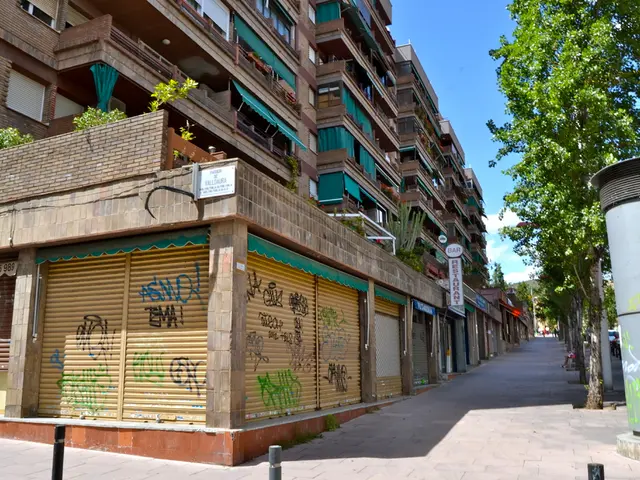Russians Prefer Hiding Money in Books and Mattresses According to VTB
Cashing In on Convenience: Where the Average Russian Stashes Their Savings
Over the years, Russians have adopted various creative hiding spots for their hard-earned savings. A substantial 20% of respondents prefer safes and piggy banks, and an additional 20% opt for hiding cash in books [source]. Fancy a hidden pocket in clothing? A whopping 12% of Russians hide their savings there! But it doesn't stop there—under the mattress (7%), behind pictures, in kitchen utensils, electronics, under the floor, in toys, and even in the bathroom—Russians have all these secret stashes [source].
Moreover, over 40% of respondents keep a modest cash stockpile at home, with amounts ranging from 5,000 to 30,000 rubles. Around 30% of Russians hold more substantial savings, ranging from 30,000 to 100,000 rubles [source]. The appeal of keeping funds at home lies in their quick accessibility. Despite this, VTB reports a six-year decline in cash as a part of savings and investments—down to a record low [source]. By the end of 2025, VTB expects this trend to continue.
Presently, the central bank's key rate remains at a staggering 21% since October 2024. In April, the Bank of Russia decided not to adjust this rate, with the next meeting scheduled for June 6 [source]. With considerable interest in high-yield deposits, the average maximum rate on ruble deposits in leading banks surpassed 20% during the second decade of April [source]. However, since the beginning of 2025, this rate has gradually decreased from 21.72% in January to a peak of 22.28% in the second decade of December 2024 [source].
Keep up with the latest news. Follow us on Telegram channel @expert_mag
- Tags: #VTB #Cash #Savings*
While keeping cash at home might seem convenient, the recent shift away from cash holdings can be attributed to several factors:
- Economic Slowdown and High Interest Rates: The Russian economy has encountered a slowdown, experiencing a decrease in inflation and waning economic growth [source]. Higher interest rates, currently at 21.00% by the Bank of Russia, can make borrowing more expensive, potentially discouraging consumer spending and prompting them to save more [source].
- Loan Defaults and Financial Stress: There has been a significant spike in loan defaults, particularly in mortgage and consumer loans, due to high interest rates [source]. This economic strain might force consumers to deplete their cash savings to pay off debt or cover living expenses.
- Decrease in Cash Circulation: The volume of cash in circulation has decreased substantially, by around 1.08 trillion rubles from January to April 2025 [source]. It may reflect broader economic trends and a shift towards electronic payments or users requiring cash for immediate expenses.
- Consumer Behavior and Economic Uncertainty: Economic uncertainty and ongoing military conflict in Ukraine might cause consumers to prioritize immediate spending needs over saving, especially if they believe their purchasing power is diminishing due to inflation fluctuations or economic instability [source][5]. Additionally, concerns about financial stability and future economic prospects might lead consumers to hold less cash, favoring other financial instruments or assets instead.
- In anticipation of the projected decrease in cash savings and investments by 2025 as per VTB, many Russians may consider central finance options for their savings, as they offer high-yield deposits with average maximum rates surpassing 20%.
- As the average Russian households prepare for continued economic instability, such as military conflict in Ukraine and inflation fluctuations, they might decide to channel their savings into business ventures as a hedge against economic uncertainty.
- With the average Russian stashing savings of between 5,000 and 100,000 rubles at home, it is essential to explore alternative storage methods for both security and longevity, such as safes, piggy banks, or even hidden pockets in clothing.
- In light of the economic slowdown, high interest rates, and loan defaults seen in Russia during recent years, it is crucial for individuals to closely monitor their cash savings and make informed decisions about where to invest for the best potential returns, balancing risk and accessibility.








